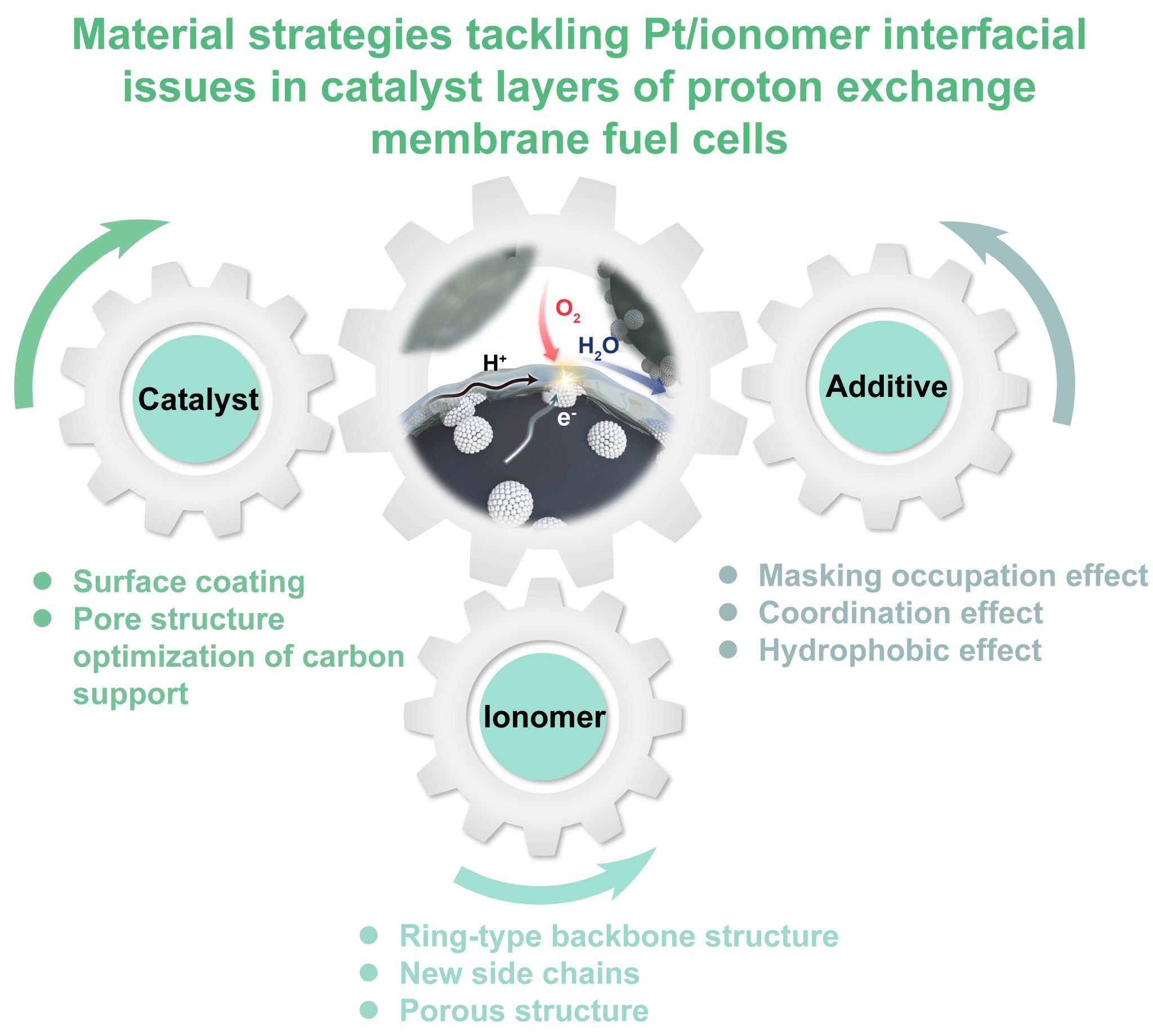The most critical challenge for the large-scale commercialization of proton exchange membrane fuel cells (PEMFCs), one of the primary hydrogen energy technologies, is to achieve decent output performance with low usage of platinum (Pt). Currently, the performance of PEMFCs is largely limited by two issues at the catalyst/ionomer interface, specifically, the poisoning of active sites of Pt by sulfonate groups and the extremely sluggish local oxygen transport toward Pt. In the past few years, emerging strategies are derived to tackle these interface problems through materials optimization and innovation. This perspective summarizes the latest advances in this regard, and in the meantime unveils the molecule-level mechanisms behind the materials modulation of interfacial structures. This paper starts with a brief introduction of processes and structures of catalyst/ionomer interfaces, which is followed by a detailed review of progresses in key materials toward interface optimization, including catalysts, ionomers, and additives, with particular emphasis on the role of materials structure in regulating the intermolecular interactions. Finally, the challenges for the application of the established materials and research directions to broaden the material library are highlighted.
https://onlinelibrary.wiley.com/doi/10.1002/adma.202306387
